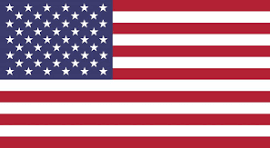Boat Anchor Chains, Swivels, and Shackles
When it comes to anchoring, the security of your vessel doesn’t just depend on the anchor itself. The strength, durability, and reliability of the components that connect your anchor to your boat are just as important. At Poco Marine, we carry a full range of anchor chain, anchor shackles, and anchor swivels, along with supporting hardware like anchor retrievers and chain hooks, all designed to keep your boat safe and steady in Canadian waters.
A well-built anchoring system ensures peace of mind whether you’re moored for an afternoon or overnight in shifting winds and currents. Every link, swivel, and shackle matters and we provide marine-grade options built to withstand the rigours of saltwater environments.
(more...) The anchor chain is the backbone of any anchoring setup. Unlike rope alone, chain adds critical weight and provides the right angle for the anchor to dig firmly into the seabed. This downward pull allows the anchor to set more effectively, holding your vessel in place even in rough weather. Beyond its weight, anchor chains offer strength and abrasion resistance. It won’t fray on rocks or seabeds the way rope can, and it adds a reliable buffer before your rope ride takes on the load. Choosing the proper chain length and thickness ensures dependable performance, no matter where you drop anchor. A swivel may seem like a small part, but it plays an essential role. When your boat swings with wind or current, the anchor naturally twists. Without a swivel, that twisting can tangle your rope or kink your chain, making it harder for the anchor to set properly and more difficult to retrieve. By adding a marine-grade swivel, you allow your chain and rode to rotate freely without transferring torque to the anchor. This makes deployment smoother and retrieval easier, reducing strain on your windlass and preventing unnecessary wear. Shackles are the primary connectors that hold your system together. A high-quality anchor shackle links the anchor to the chain and the chain to the rope rode. The importance of a strong, corrosion-resistant shackle cannot be overstated. A weak or worn-out shackle is a potential failure point. At Poco Marine, our shackles are built from durable materials, sized to industry standards, and designed for consistent strength under load. They’re simple to install yet critical for your vessel’s safety. Hauling up a stuck anchor can be hard on your back and your patience. That’s where anchor retrievers come in. Using buoyancy and leverage, they allow you to pull your anchor free from the seabed without heavy lifting. Common types include ring retrievers and buoy systems, which guide the anchor to the surface as you motor forward. It’s a simple tool that saves time, energy, and wear on your equipment. A chain hook provides a secure, temporary connection to your anchor chain. These are especially useful when rigging an anchor snubber or bridle to take strain off your windlass. By transferring load to a cleat or bridle, you reduce shock loads on the boat and make for a quieter, more comfortable stay at anchor. Chain hooks are also handy for lifting and handling chain without stress on your hands or rope. A small tool with big value for serious boaters. At Poco Marine, we know Canadian boaters demand equipment that stands up to rugged conditions, from saltwater corrosion to the constant pull of tides and currents. That’s why we stock only marine-grade anchor hardware built for durability, strength, and long-term reliability. Choosing our gear means choosing safety and peace of mind. With high-quality anchor chains, shackles, and swivels, you can head out knowing your vessel is securely moored. Add in our fast shipping across Canada and knowledgeable customer support; you’ve got everything you need for a dependable anchoring system. The size depends on your boat length and displacement. As a general rule, small boats under 20 feet may use 1/4-inch chain, while larger vessels may require 5/16-inch or 3/8-inch chain. Always check manufacturer guidelines and match your chain to your anchor and windlass specifications. Hot-dipped galvanized chain offers excellent corrosion resistance at a lower cost, though the zinc coating may wear over time. Stainless steel chain is more resistant to rust and offers a polished look, but it typically comes at a higher price point. Both are marine-safe options. While not mandatory, a swivel is highly recommended. It prevents your rode from twisting as your boat shifts, which helps your anchor set better and makes retrieval easier. For frequent anchoring, a swivel pays off in reduced wear and smoother operation. Check for visible corrosion, distortion, or cracks. Make sure the pin threads smoothly and locks securely. If the shackle shows thinning metal, sharp edges, or a pin that doesn’t seat properly, it’s time to replace it. The most secure method is to use a galvanized or stainless anchor shackle of the appropriate size. Ensure the pin is tightened firmly and, if possible, seized with wire or a locking method to prevent loosening. Yes, especially for boats that swing frequently with tide or wind. A swivel prevents rode twist and helps reduce strain on your windlass and anchor system. A common rule is to carry at least one foot of chain for every foot of boat length. Many cruisers use all-chain rode or a combination of chain and rope, with the chain length providing critical holding power. In nautical terms, a “shackle” also measures chain length (usually 90 feet or 27.5 metres). “Two shackles in the water” means about 180 feet of chain has been deployed.The Components of a Secure Mooring
Anchor Chain
Anchor Swivels
Anchor Shackles
Anchor Retrievers
Chain Hooks
Why Choose Poco Marine’s Gear?
Frequently Asked Questions
How do I know what size anchor chain to buy?
What is the difference between a hot-dipped galvanized and stainless steel chain?
Do I really need a swivel on my anchor setup?
How do I properly inspect my shackles for wear and tear?
What’s the best way to connect my anchor to the chain?
Should you use a swivel on an anchor?
What is the rule of thumb for anchor chains?
What does 2 shackles in the water mean?
Showing all 10 results
-

Anchor Buddy
$43.45 USD Select options This product has multiple variants. The options may be chosen on the product page -
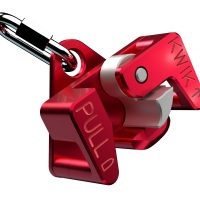
Fish Fighter Kwik-Pull Anchor Retriever
$108.68 USD Add to cart -
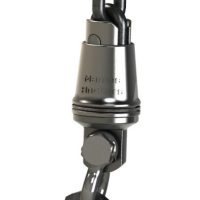
Mantus Anchor Swivel
$100.46 USD – $239.15 USD Select options This product has multiple variants. The options may be chosen on the product page -

Mantus M2 Chain Hooks
$43.45 USD – $173.92 USD Select options This product has multiple variants. The options may be chosen on the product page -

Mantus M3 Stainless Steel Chain Hook
$71.03 USD – $260.89 USD Select options This product has multiple variants. The options may be chosen on the product page -
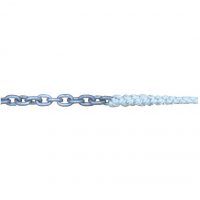
Titan Anchor Rode 150′ 1/2″ 8-Strand Plaited Nylon Rope with 15′ 1/4″ G4 Windlass Chain
$171.74 USD Add to cart -

Titan Anchor Rode 150′ 1/2″ 8-Strand Plaited Nylon Rope with 50′ 1/4″ G4 Windlass Chain
$243.50 USD Add to cart -

Titan Anchor Rode 150′ 5/8″ 8-Strand Plaited Nylon Rope with 50′ 5/16″ G4 Windlass Chain
$276.84 USD Add to cart -
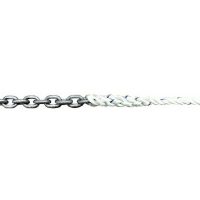
Titan Anchor Rode 200′ 1/2″ 3-Strand Nylon with 50′ 1/4″ HT G4 Calibrated Chain
$236.97 USD Add to cart -

Titan Anchor Rode 250′ 5/8″ 8-Strand Plaited Nylon Rope with 50′ 5/16″ G4 Windlass Chain
$386.28 USD Add to cart


